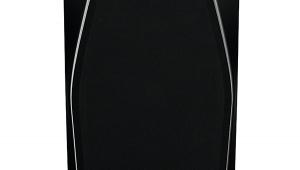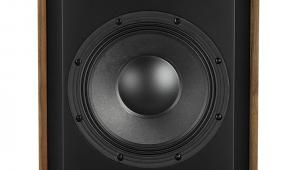ELAC Adante AS-61 loudspeaker

 With a concentric mid/treble and coupled-cavity bass, the smallest Adante series speaker is no ordinary standmount
With a concentric mid/treble and coupled-cavity bass, the smallest Adante series speaker is no ordinary standmount
There was a time, back in the 1980s, when much of what was novel in loudspeaker design emerged from KEF’s R&D department in Maidstone, Kent. Odd as this may seem as a way of introducing a new ELAC speaker from Germany, it’s doubly relevant because the £2600 Adante AS-61 – indeed, the entire three-model Adante range (not including the ASW-121 powered subwoofer) – incorporates two features associated with that golden era at KEF: one that has remained familiar, and a second that has rather declined into obscurity.
Golden Era
Before this sounds like an audiophile pub quiz, I’m talking about the cone/dome coincident driver array (Uni-Q in KEF-speak) and the bandpass enclosure, better known as coupled-cavity bass loading. Neither is classic ELAC fare but the arrival of Andrew Jones as chief engineer has acted as a conduit for them. He worked under Laurie Fincham at KEF in the 1980s, made his name at TAD (not least with the CST coaxial driver with beryllium dome and cone), and is now showing us that designing speakers for the deep of pocket is not his only talent.
ELAC has made coaxial drivers before, in the form of the X-JET and X-JET II, but these featured a planar or almost-planar annular midrange diaphragm surrounding one of ELAC’s pleated-diaphragm Air Motion Transformer JET tweeters. We saw the first cone/dome coincident driver from ELAC in Jones’ recent Uni-Fi series – the Adante variant is similar in that it too combines an aluminium alloy cone with a soft-dome tweeter where the dust cap would otherwise be, although here the midrange voice coil diameter is increased to 2in. The cone is flared, the flare being chosen to combine with that of the fixed ring around the tweeter, the shape of the cone surround and the continuation of the waveguide into the bonded aluminium front baffle to achieve a smooth expansion (Jones describes it as ‘a blended multi-radius profile’) which delivers well-controlled responses both on- and off-axis. The first cone breakup mode occurs at about 6.5kHz, 1.7 octaves above the 2kHz crossover to the tweeter.
This lower-than-typical crossover point is partly achieved by equipping the soft dome tweeter with a large surround. A soft dome, here formed of silk fabric with a coating that optimises its vibrational behaviour, was chosen as more appropriate to this application than a metal dome. This choice in turn affected the selection of cone profile as, Jones says, ‘the way a hard dome matches into a waveguide is very different from a soft dome’.
At first glance you could easily mistake the AS-61 for a conventional three-way design, although the absence of a port (front, back or exhausting through a plinth) might puzzle you – surely not a closed-box speaker in this day and age? Indeed not, for as already indicated, all the Adante models employ coupled-cavity loading at low frequencies – but with a difference.
Coupled-Cavity
Cast your mind back to KEF’s Four-Two, Three-Two, etc, models and you may recall that there was no visible bass driver, all the bass output being delivered via a large reflex port, with the bass driver(s) out of sight within the cabinet. Essentially the AS-61 is the same but for two important revisions. First, an ABR (auxiliary bass radiator) replaces the radiating port, so the bass ‘driver’ that you see is not a driver at all but a passive cone. The real bass driver is located within the cabinet behind the ABR, with – the second revision – a reflex port connecting the enclosed volume between the driver and ABR with that behind the driver.
In effect, this arrangement resembles a conventional reflex-loaded speaker with a front-firing port, to the front of which is attached the chamber containing the ABR. Acoustically, this adds a second-order low-pass filter that increases the upper slope of the bandpass response, at 200Hz, from second (12dB per octave) to fourth-order (24dB per octave) – all achieved without electrical filtering. That is one good reason for elaborating on KEF’s original layout but there are others, described in the accompanying Sidebar.























































